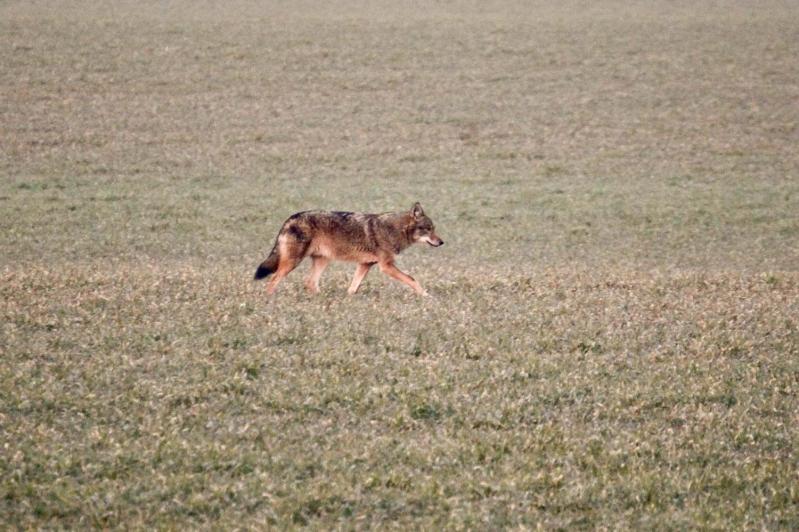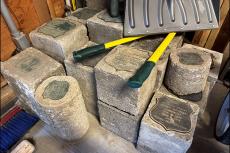Coyote sightings on the North Fork this autumn and a month ago in Bridgehampton are not surprising to those who study this wide-ranging mammal. Coyotes have never bred in Suffolk County, but with one-off sightings increasing in frequency, the question isn’t if they will breed here but when.
“Loving coyotes is always an option, but living with them probably will not be,” Mark Weckel, the director for youth programming at the American Museum of Natural History, said in a 2015 presentation titled, “Coyotes on Long Island: A Framework for Planning Ahead.” At the time, he said that a Long Island breeding population was “inevitable and imminent.” Since then, a breeding pair has been documented in the Port Washington area.
“Watch out for your pets,” wrote Camilla Shurt, on the Nextdoor app, when she spotted a coyote in December off Loper’s Path in Bridgehampton.
“While it’s a wild predator, it doesn’t have high risks associated with it,” said Dr. Weckel. “If you leave your dog out at night, you run the risk — if you have a coyote in the area — of having that coyote depredate your dog.” Coyotes are opportunistic omnivores but choose to avoid human encounters.
“There are certain rules you follow,” Mike Bottini, a wildlife biologist at the Seatuck Environmental Association, said by phone. “If you really love your cat, don’t let it roam around outside. Long Island is the largest island in the lower 48 states and the last significant piece of real estate in North America that coyotes have not colonized,” he said. “It’s a new thing for Long Islanders, but bigger picture, there’s nothing new about coyotes. They could have a positive impact on our ecosystem, by bringing it into more balance.”
In other words, despite the presence of coyotes across the country, small dogs, cats, and children are still thriving.
The coyote has been creeping closer to the Island for years. When juvenile coyotes disperse, they can travel up to 100 miles in search of territory. But once breeding, their territory shrinks to about a square mile. They started in the center of the country, hitting the Adirondacks in the 1920s, and then Westchester in the 1970s. They didn’t arrive in New York City until the 1990s.
“A 1994 coyote was hit by Van Cortland Park and a statue was erected commemorating its death,” said Dr. Weckel. One was spotted every five years or so, until 2010, when sightings became more frequent. One was seen near Columbia University, and then there was the “summer of the Lincoln Tunnel coyote.” The first Long Island coyote was found in 2009, in Queens, and named Frankie. By 2012, they were discovered breeding in the Bronx.
According to the New York State Department of Environmental Conservation, the first confirmed sighting of a coyote in Suffolk County was in the Bridgehampton area in 2013. Keith Douglas, a licensed wildlife rescuer with the Eveyln Alexander Wildlife Rescue Center, watched one cross the Bridgehampton-Sag Harbor Turnpike early one morning while he was driving to Sag Harbor. “It was 6 a.m. and it was traveling along the right of way under the power lines. It’s exciting to know they’re here,” he said.
In 2016, Evan Marks, who owns a house only two miles from Loper’s Path, recorded a coyote howling in response to a passing train. “My recording is unmistakably a coyote,” he said in a phone call. He also heard the coyote reported by Ms. Shurt a month ago.
There are two main theories about where the East End coyotes are coming from, and both may be true. Some believe they are making their way across the Sound, island hopping from southern Connecticut to the Fishers Island archipelago and heading south. According to the D.E.C., coyotes have been found dead on beaches in Mattituck and Southold, but it couldn’t be determined if they had washed up or died on the North Fork.
They could also be using railroad tracks. Dr. Weckel said railroad conductors have told him they see coyotes every day, and railroad tracks run adjacent to Mr. Marks’s backyard in Bridgehampton.
Because it’s 2024, there are also coyote conspiracy theorists. “Some people on social media think the D.E.C. is purposely releasing them to deal with the deer population,” said Mr. Bottini. But he said coyotes wouldn’t take down a fully grown deer. Instead, they would scavenge roadkill deer or take newly born fawns. Scientists have studied the scat of the coyotes near Port Washington and found they eat what’s available and easy. Raccoons have been one of the main components of their diets.
“They do not present a major risk, but they can present a major perceived risk,” said Dr. Weckel. “All we need is one negative coyote encounter and it changes the entire conversation. They’re the biggest predator we have, save humans, on Long Island.”
If you encounter a living coyote, you can report it at seatuck.org/coyotes. If you see coyote roadkill in Suffolk County, submit your report to [email protected].




